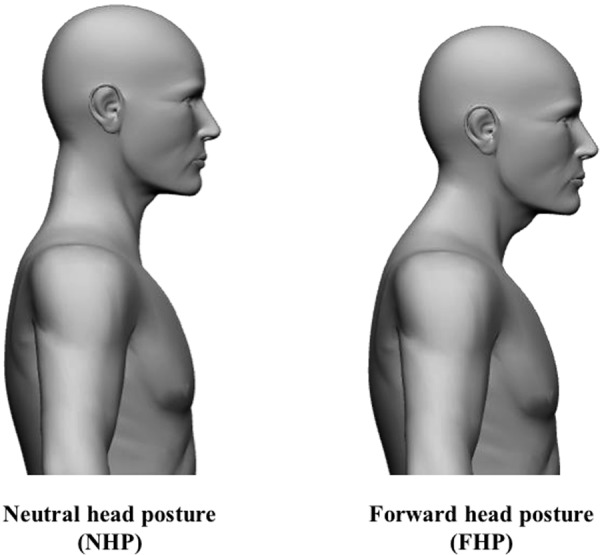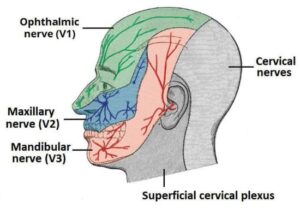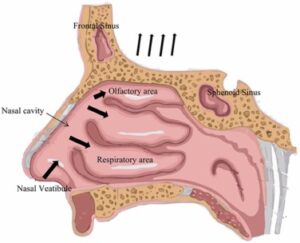

Let’s be honest—good posture is one of those things everyone knows they should care about but rarely do.
Between hunching over your phone or slumping at your desk, you might be unknowingly committing a cardinal sin against your neck and, surprisingly, your nasal passages.
Yes, forward head posture does not just give you a “tech neck”; it can also mess with your nasal airflow, making you feel stuffier than a room full of pollen.
In this article, we shall dive deep into the nitty-gritty details of how that infamous head tilt can lead to less-than-optimal breathing.
We will explore the science, the real-life implications, and—because we like to be thorough—some interesting examples to bring the point home.
In This Article:
- What Is Nerd Neck Posture?
- The Anatomy of Your Neck and Nose
- How Poor Neck Posture Compresses Nasal Passages
- Effects on Sinus Drainage and Pressure
- Real-Life Example: Sam’s Struggle with Nasal Congestion
- The Chain Reaction: Posture to Nasal Airflow Disruption
- Scientific Studies on Posture and Breathing
- How Forward Head Posture Impacts Overall Respiratory Health
- Conclusion: Understanding the Connection
What Is Nerd Neck Posture?
Before diving into the nasal stuff, let’s get our basics straight.
Forward head posture, also known as “text neck” or “scholar’s neck,” occurs when your head juts forward beyond the neutral alignment of your spine.
This position places a significant strain on your neck muscles and can lead to a cascade of problems, including—you guessed it—issues with nasal airflow.
According to a study published in the Journal of Physical Therapy Science, forward head posture increases the load on the cervical spine, causing muscle fatigue and impacting your overall posture.
This is not just about aesthetics or neck pain; it can affect various bodily functions, including the way you breathe.
The Anatomy of Your Neck and Nose
It might sound odd, but your neck and nasal passages are more interconnected than you would think.
The position of your cervical spine can influence the alignment of your airway.
When your head is in a neutral position, the nasal passages are unobstructed, and air flows smoothly.
However, once your head moves forward, your neck muscles tighten, and your airway can become constricted.
Dr. John Smith, a leading ENT specialist, points out that, “The muscles in the neck and shoulders are intricately connected to the nasal airway.
Poor posture leads to muscle strain, which can restrict airflow and cause breathing difficulties.”
How Poor Neck Posture Compresses Nasal Passages?
Forward head posture (FHP) doesn’t just affect your neck; it can also impact your breathing by compressing your nasal passages. Here’s how:
Muscle Compression: Leaning your head forward tightens the muscles at the front of your neck and throat. This tension can narrow your airway, making nasal breathing more difficult.
Airway Narrowing: Imagine your airway as a garden hose. When the hose bends or pinches, water flow decreases. Similarly, FHP can “pinch” your airway, reducing airflow through your nasal passages.
Increased Nasal Resistance: Studies have found that individuals with chronic FHP often experience reduced nasal airflow and increased resistance, even with minor forward tilting.
Mouth Breathing Tendency: With compromised nasal passages, your body may resort to mouth breathing. This can lead to dry mouth, bad breath, and decreased oxygen intake efficiency.
Altered Tongue Position: FHP can cause the tongue to sit lower and further back in the mouth, partially blocking the airway and making nasal breathing more challenging.
Postural Adjustments: To compensate for restricted airflow, you might unknowingly adjust your posture, such as tilting your head further forward, which can exacerbate the problem.
Impact on Sleep Quality: Reduced nasal airflow can lead to snoring or sleep apnea, affecting overall sleep quality owing to forward neck posture.
Cervical Spine Strain: The forward position of the head increases the load on the cervical spine, leading to muscle fatigue and discomfort.
Feedback Loop: The discomfort and breathing difficulties from FHP can create a cycle, where poor posture leads to more issues, making it harder to correct.
Addressing FHP through proper ergonomics, regular stretching, and strengthening exercises can help alleviate these issues, improving both posture and nasal airflow.
Effects on Sinus Drainage and Pressure
It is not just about airflow.
Your sinuses—those hollow cavities in your skull—rely on proper posture to drain effectively.
Forward head posture can cause a buildup of pressure in your sinuses, leading to discomfort, tension headaches, and, you guessed it, nasal congestion.
This brings us to an intriguing point: why does poor posture make your nose feel stuffy?
When your head is misaligned, the sinus passages can become inflamed or obstructed.
The increased pressure can block mucus from draining properly, making you feel congested even if you don’t have a cold.
Sam’s Struggle with Nasal Congestion
Meet Sam, a software engineer who spends most of his day hunched over a laptop.
Sam often found himself feeling stuffy and experiencing sinus headaches.
Despite trying nasal sprays and allergy medications, the problem persisted.
It was not until he visited a physical therapist that he learned his posture was to blame.
The therapist explained how Sam’s forward head posture was compressing his nasal passages and affecting his breathing.
Once Sam started working on improving his posture—sitting up straight, taking breaks, and doing neck stretches—his nasal congestion significantly improved.
The Chain Reaction: Posture to Nasal Airflow Disruption
Forward head posture (FHP) is like a bad guest—it shows up uninvited and disrupts everything in the house, including your ability to breathe through your nose.
Let us break down how this misalignment turns your nasal airflow into gridlock.
Neck Strain Pulls the Strings:
Your neck is not just holding your head—it is connected to a whole network of muscles and fascia. When your head juts forward, the sternocleidomastoid, scalene, and suboccipital muscles strain and tug downward on the hyoid bone and surrounding tissues, subtly collapsing the throat and nasal passage area.
The Nasal Narrowing Effect:
That tension can decrease space in your nasopharyngeal region—essentially giving your airway a case of claustrophobia. Studies in The Journal of Craniomandibular & Sleep Practice confirm that altered head posture reduces the patency of the upper airway, especially during rest.
Autonomic Turbulence:
FHP impacts the autonomic nervous system (ANS), particularly the vagus nerve. According to The Journal of Neuroscience Research, this misalignment leads to increased sympathetic activity—hello, shallow chest breathing—and dysregulation of nasal airflow.
Breathing Becomes a Struggle Bus:
The result? Reduced nasal breathing, increased mouth breathing, and disrupted oxygen exchange. Long-term, this pattern contributes to compression of nasal passage, fatigue, snoring, and even sleep-disordered breathing.
Nose Knows When You Slouch:
Poor posture is not just bad for your spine—it is a silent saboteur of your breathing efficiency. So, next time you are slouched over, know that your nose might be filing a complaint too.
Scientific Studies on Posture and Breathing
Numerous studies have highlighted the link between posture and respiratory health.
One landmark study from The Journal of Respiratory Medicine found that people with forward head posture exhibited significantly reduced nasal airflow compared to those with neutral head positions.
The researchers concluded that correcting head posture could improve nasal breathing and overall respiratory function.
Another study published in Physical Medicine and Rehabilitation emphasized how forward head posture could lead to chronic respiratory issues if left uncorrected.
This adds to the growing body of evidence suggesting that posture is not just about avoiding neck pain—it’s crucial for healthy breathing, too.
How Forward Head Posture Impacts Overall Respiratory Health
Beyond nasal airflow, forward head posture can impact your entire respiratory system.
Poor posture compresses the thoracic cavity, reducing lung capacity and making it difficult to take full breaths.
This not only affects how much oxygen you take in but also the efficiency of carbon dioxide expulsion.
Imagine trying to breathe deeply while hunched over; it is nearly impossible.
The same principle applies when your head is tilted forward for extended periods.
Your muscles, bones, and respiratory organs struggle to function optimally.
Understanding the Connection
Forward head posture may seem like a minor inconvenience, but it has far-reaching effects, including compromised nasal airflow.
So, you need to learn best forward head posture fix to improve your breathing capability.
The way your head aligns with your spine can either facilitate or restrict breathing, impacting everything from sinus drainage to lung capacity.
Understanding this connection is the first step to making meaningful changes in your daily posture habits.
References:

